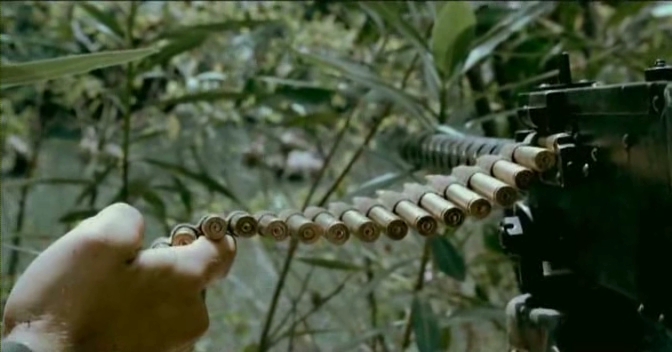
Elio Petri’s Investigation of a Citizen above Suspicion is a film that exudes strength on every level: Gian Maria Volontè’s police chief walks fast and with a purpose, wearing tailor-made, form-fitting suits, and holding his chin high. He is so arrogant he leaves pieces of evidence of the murder he commtted all over the place- just to prove he is above the law.
He is sometimes aggressive, sometimes stoic; always strong. He yells and chews out leftists – and his own subordinates. He moves with irrepressible swagger and confidence, never allowing any sign of weakness to seep through his exterior. Pauline Kael once wrote about Volontè: “When he marched to his death in Sacco and Vanzetti, you felt like it would take a lot of juice to kill him. Mastroianni can play a good man, but not a great man. Volontè can.”
As Volontè chews throught the scenery, the film’s parallels to present-day politics are hard to ignore. Like Donald Trump, Petri’s police chief uses his energy to seem determined, in-charge, and never ever, in doubt.



“The exercise of freedom. Our duty is to repress them! Repression is civilization!”
Petri’s camera moves almost constantly: Fast pans and zooms add to the energy of the film. The story, the acting, the camerawork and the extraodinary, baroque score by Ennio Morricone all build towards the same theme: unchecked power.
Volontè represents the law, but like Trump, he considers himself untouchable. He can get away with anything. From Mussolini to Berlusconi, he is The Strong Man fascist Italy loved and loves.
Watching the film today it almost comes across as an analogy to Trumps ongoing coup d’etat. As Trump accuses his opponent of the exact crime he himself is committing (“They’re stealing this election!”), he mirrors Volontè’s police chief to a tee. They are both commiting their crimes in plain sight, with everybody watching. They can get away with it because their followers want a strong leader, not a law-abiding man. As Trump himself once put it: “I could stand in the middle of 5th Avenue and shoot somebody and I wouldn’t lose any voters.”
Petri has made a masterpiece. A colorful, kinetic film that feels as relevant now as its ever been.
Triumphant return: A Trump campaign-video with clear fascist undertones.







